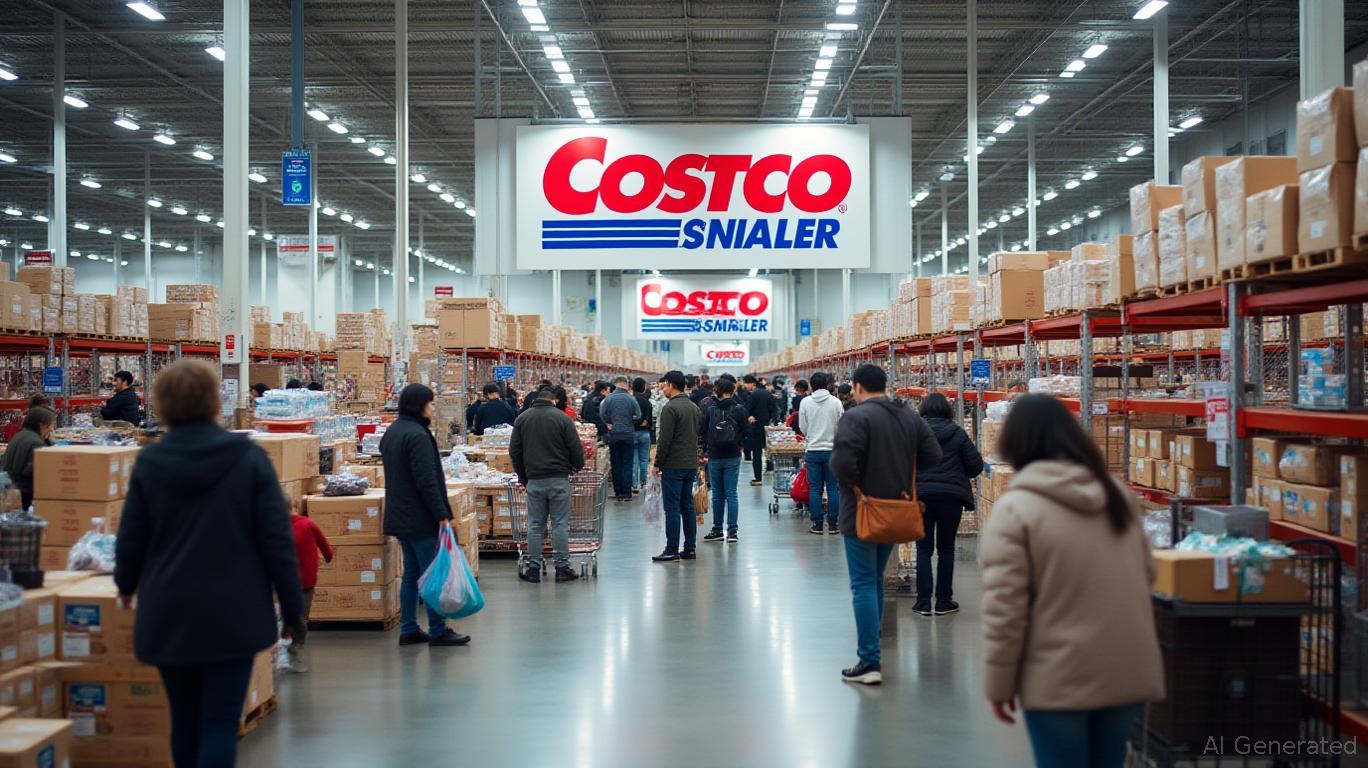Shares Of Costco Wholesale Corporation (Nasdaq: Cost) experienced a important boost, climbing 3% to $1,040 per share, following the release of it’s impressive fiscal third-quarter earnings report. The Retail Giant not only surpassed both earnings and revenue projections but also demonstrated resilience in navigating the complexities of international tariffs.
Costco’s Year-To-date (YTD) performance shows approximately a 14% increase, reflecting strong investor confidence in the company’s strategic initiatives and overall market position.
The latest Earnings Report Highlights Several Key Areas Of Success For Costco:
Comparable Store Sales Saw Robust Growth, Indicating Strong Consumer Demand:
Excluding Gas Sales, overall Comparable Store Sales Rose By 8%.
Chief Executive Officer (CEO) Ron Bakris Explained Strategies To Mitigate Tariff Effects during The earnings Call. These Include:
Costco’s Exposure To Tariffs Is Relatively Lower Compared To Other Major Retailers, With Approximately One-Third Of Its Products Being Imported Into The U.S., And Only About 8% Originating from China. The Majority Of These Imports Are Non-Food Items.
Higher Inflation In Non-Food Items Led To A $130 Million Last-In, first-out (LIFO) Charge, Affecting Earnings And Gross Margins. Chief Financial Officer (CFO) Gary Millerchip Indicated That If Current Inflation Rates Persist, An Additional $40 Million To $50 Million LIFO Charge Could Be Expected In The Fourth Quarter.
Following The Q3 Earnings Release, Costco Received Several Price Target Upgrades, Including A $75 Per Share Increase From Morgan Stanley and A $47 Per Share Increase From Truist.The Median Price Target For Costco stock Is $1,088 Per Share, Suggesting A Potential 7% Increase From Current Levels.
While Costco Stock Is Up 14% YTD, Its High Price-To-Earnings (P/E) Ratio Of 58 Should Be Noted As A Factor For Investors To Consider.
Costco’s Success Isn’t Just About Bulk Buying; Its membership model is a key differentiator. Paid memberships grew 7% to 79.6 million, with a stunning 90.2% renewal rate worldwide. This loyalty fuels consistent revenue and allows Costco to offer competitive pricing.
Did You Know? Costco’s first warehouse, opened in 1976 in San Diego (under the name Price Club), pioneered the membership-only warehouse concept.
Costco Is On Track To Open 24 new Stores In This Fiscal Year, With 15 Already Operational. Additionally, The company Plans To Relocate Three Existing Stores, Optimizing Its Retail Footprint.
| Metric | Q3 Fiscal Year | Analyst Estimates |
|---|---|---|
| Revenue | $63.2 Billion | $63.1 Billion |
| Net Income Per Share | $4.28 | $4.24 |
| Comparable Sales Growth | 5.7% | N/A |
Beyond Quarterly Earnings, Costco’s business model focuses on long-term membership value. This strategy fosters customer loyalty and predictable revenue streams.
Consider Costco’s expansion into services like travel, insurance, and auto programs. These offerings enhance membership value, solidifying customer relationships and driving long-term growth.
Pro Tip: Monitor Costco’s membership renewal rates closely. High renewal rates indicate strong customer satisfaction and brand loyalty, often signaling continued financial health.
In a highly competitive retail surroundings, Costco differentiates itself through its membership model and focus on value. By offering a curated selection of products at competitive prices,Costco attracts a loyal customer base willing to pay an annual fee for access.
Furthermore,Costco’s ability to negotiate favorable terms with suppliers and efficiently manage its supply chain enables it to maintain competitive pricing while preserving margins. This operational excellence provides a significant advantage over competitors.
What are your thoughts on Costco’s impressive Q3 performance and future prospects? Share your insights in the comments below!









